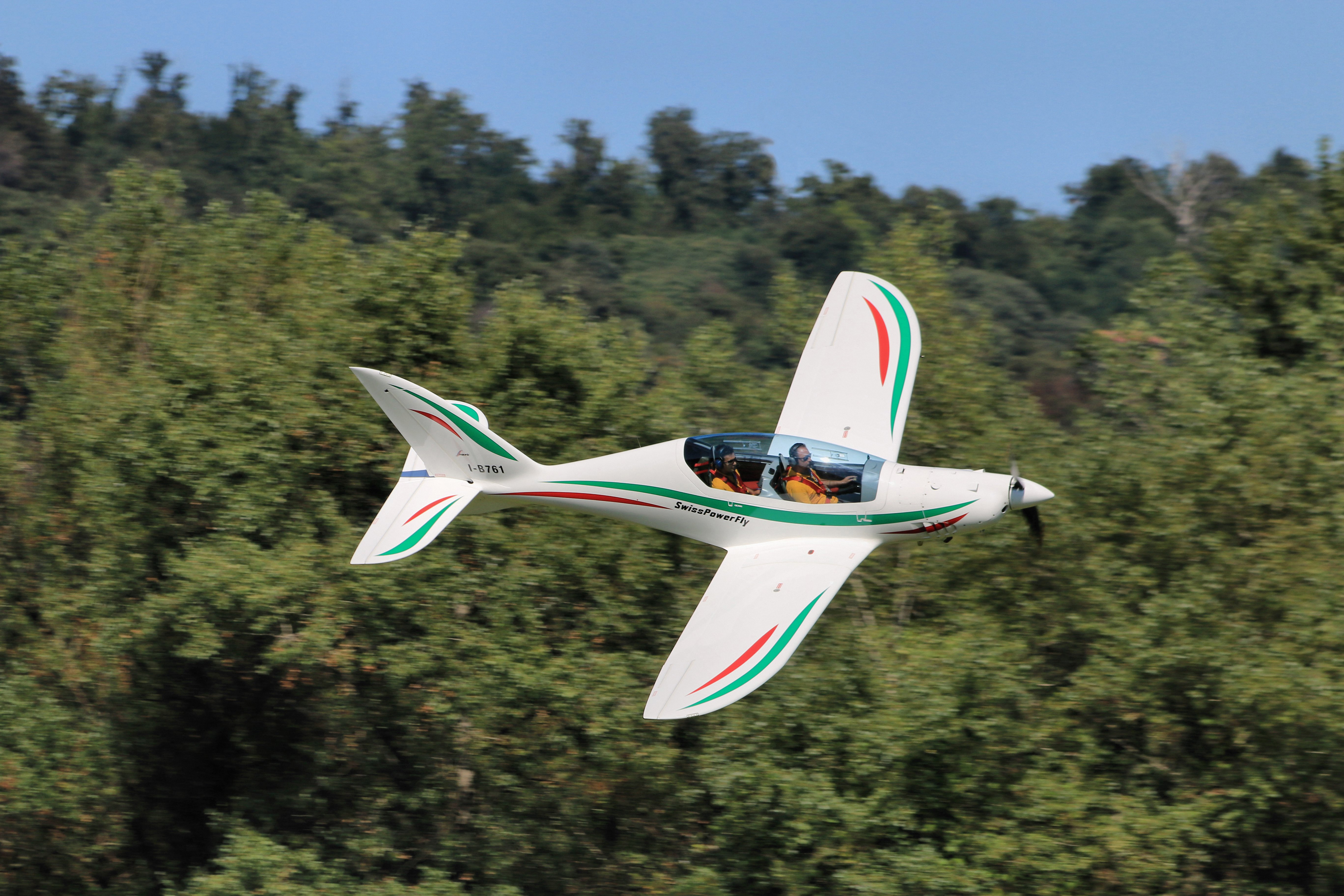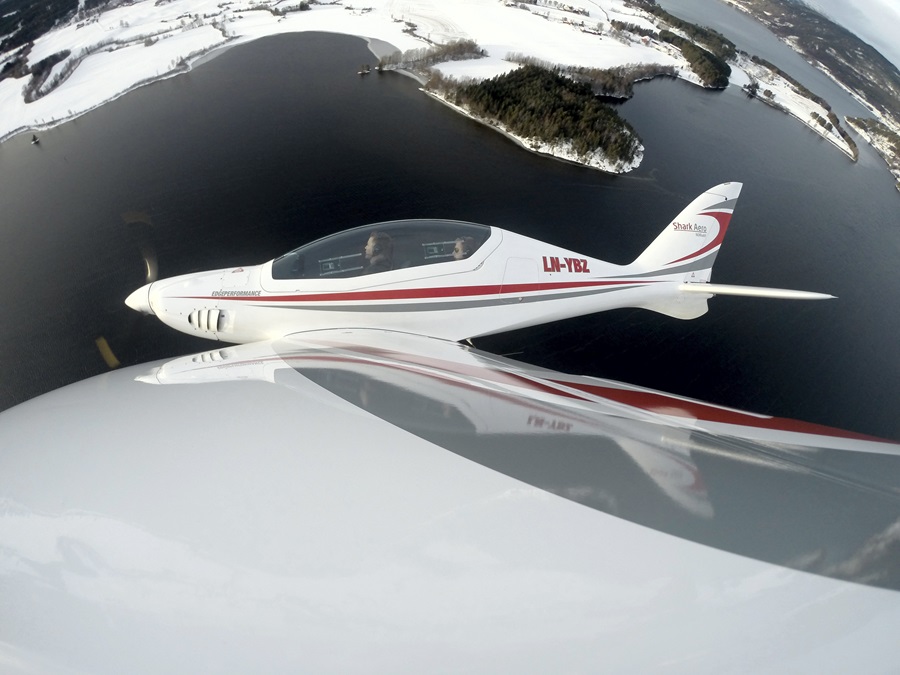Shark swimming slowly to US
New kit coming from Europe in 2017
A 150-knot tandem-seat airplane called Shark that is certified in Europe as an ultralight is coming to the United States as a kit with retractable landing gear. It may be a while before you see many of them in the United States, although a demonstrator has arrived. You can see a video of it buzzing around Warrenton, Virginia.
The aircraft gets its name from the distinctive shape of the tail. Weighing about the same as a light sport aircraft (LSA), it could be slowed to the LSA 120-knot speed limit with a different propeller and wing. Fixed gear would need to be installed since retractable gear is not allowed in the LSA category. But for now the focus is on selling kits that can be flown in the experimental category. None have been sold to customers yet, but a kit will arrive for a California dealer next year.
A used demonstrator built by the factory is now in the eastern United States to give rides to potential customers. Contact East Coast dealer Jonathan Baron to schedule a demonstration ride. Baron works full time at MITRE. If built at the factory and sold in the United States, the aircraft must be flown in the restrictive experimental exhibition category, limiting its use. The first aircraft to arrive will be sold as a kit and delivered to a builder assist center in Fort Pierce, Florida, called High Speed Composites.
A factory representative said 40 are now flying in Europe. The factory-built Shark now based in Virginia came from an Italian flying club and is flown in the experimental exhibition category, meaning it can be used primarily for sales demonstrations close to its home base and can attend airshows at greater distances with FAA notification. The gear retracts automatically at 62 knots with the gear handle in the retract position. There were reports that the gear system needed tweaking, but the factory representative said he is happy with the gear performance. The aircraft stalls at 27 knots indicated airspeed in landing configuration and 40 knots in cruise configuration. Flaps extend in three positions to 30 degrees. It can take off and climb to 50 feet in 672 feet, per the pilot operating handbook. It has a steerable nosewheel. AOPA has not yet flown the aircraft.
A California dealer will have a Shark kit shipped to High Speed Composites perhaps as soon as spring 2017. The firm has years of experience in the builder assist field and is currently working on the Radial Rocket RG powered by a 400-horsepower M-14 radial engine that cruises at 245 mph using high power settings. The firm also is building molds for the pressurized 210-knot (below 17,000 feet) Lancair Evolution that comes as a turbine or piston-powered kit airplane. Above 17,000 feet the piston model cruises at 230 knots true airspeed, while the turbine model cruises at 261 knots true airspeed.
Depending on the avionics chosen, the Shark costs could be as low as $150,000 or as high as $170,000. A first order from the United States was expected in a month, a factory representative said. Delivery would occur four to five months after that. As the first kit is built, careful records will be kept to ensure that the aircraft meets the U.S. requirement that 51 percent of the kit is to be built by the owner.




